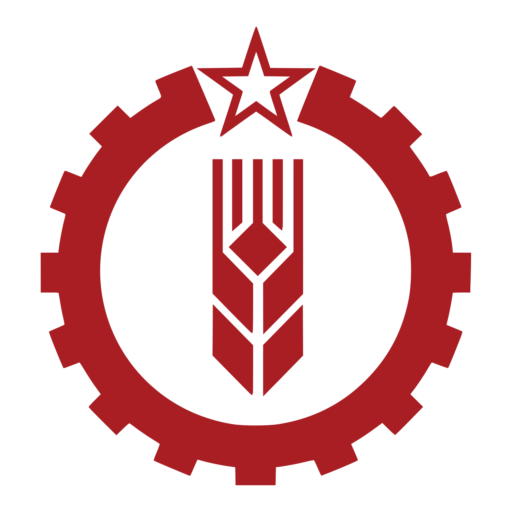Written by Hari Kumar, 1993. Previously posted to Alliance-ML.
A BRIEF BOOK REVIEW : “Stalinist Terror, New Perspectives.”
Edited by J. Arch Getty and Roberta T. Manning. Cambridge University Press, 1993. ISBN 0-521-44125-0 Hardback or 0-521-44670-8 Paperback. Cost : $24.15 paperback in Canada.
This book has considerable interest. It presents rare data of interest, and also shows a changing wind in academia. The usual wind is: Stalin was nasty and cruel; alternatively stupid, or bright and devious; who was not responsible for good things like the Soviet conduct of the War; who …etc.
Ultimately the truth will out.
The mythology built up around Stalin is rarely challenged. Even Marxist-Leninists often accept the premises of Trotsky. That is to say, Marxist-Leninists with the courage to defend Stalin often set out from positions stated by Trotsky.
Thus, the standard defence of the Purges. Trotsky says: Stalin master-minded them and controlled them. Our reply has usually been: These problems either were exaggerated; or Stalin had correctly initiated them to cleanse the Party.
Both views are true – as far as they go. But they conceal a larger reality, that they were consciously used by the Opposition to discredit the Party and Stalin.
Stalin was NOT: “The Omnipotent All Powerful Being That Controlled The Soviet Ship”. This book vindicates those who argued, that Stalin was not in control of the Politburo and that other forces were at work. This was promulgated by the Communist League (UK), and remains contentious in the Marxist-Leninist movement. This book, contains powerful evidence as actual case reports of individuals and issues, that substantiate this minority view.
Of course, this book cannot address: “What other forces were ranged against Stalin?” And so, bourgeois academics overlook the class struggle yet again! That much has not changed! But despite that, the significance of this book should not be underrated. The editors were, before “Glasnost”, unable to swallow the myths of Cold War Warriors led by Robert Conquest.
Arch Getty and co-workers nailed some inconsistencies with previous mythologies using a unique archive, removed from Smolensk in the Second World War by the Hitlerites, and then studied. This resulted in: “The Origin Of The Great Purges – The Soviet Party Reconsidered 1933-38”, New York, 1985. This data and others, allowed Getty and others to develop a critical school, who: “investigated Stalin-period history as history.” p.3, and not as bias. Of course, Conquest and Trotskyites have been the most resistant to this school of historians – labeling them as “revisionist”!
This review only gives a flavour. The first two chapters counter-pose a relatively traditional view of Nikolai Ivanovich Ezhov, the head of the Secret Police the NKVD (By Boris Starkov) with a “revisionist” interpretation by Arch Getty. Even the relatively traditional view is of great interest, containing much material, that is new to this reviewer. But Starkov asserts that Stalin “enjoyed the complete trust of J.V.Stalin” p.24.
To the contrary however, Arch Getty shows how Stalin obstructs Ezhov:
Ezhov: Comrades as a result of the verification of party documents we expelled more than 200,000 members of the party.
Stalin: [Interrupts] Very many.
Ezhov: Yes very many. I will speak about this…
Stalin: [Interrupts] If we explained 30,000..(inaudible remark) and 600 former Trotskyites and Zinovievists it would be a bigger victory.
Ezhov: More than 200,000 members were expelled. Part of this number.. were arrested.”
Cited from Stenographic Records. (p.51).
Further brakes were attempted upon Ezhov by Zhdanov (an unchallenged comrade-in-arms of Stalin) when:
-
-
-
- “In a highly publicized attack Zhadanov accused the Saratov kraikom (party leadership-Ed) of “dictatorship” and “repression.” … At the Feb 1937 Central Committee Plenum, Zhadanov gave the keynote speech on democratizing party organisations, ending bureaucratic repression “little people,” and replacing the cooption of party leaders with grass roots elections. Indeed under pressure of this line, contested secret ballot party elections were held in 1937.”
- Ibid. p.51.
-
-
More needed? Take the case of Avel’ Enukidze, Secretary of the Central Executive Committee of Soviets. He got Ezhov’s ire; who tried to expel him. Stalin and Molotov defended him. After further pressure, he was expelled. Molotov and Stalin moved for him to be readmitted. Though the plenum agreed, this never happened – arrested he was shot in 1837. The record shows a clear pattern here of Stalin versus (See p.54).
Even Bukharin‘s execution was controversial. Stalin wanted him expelled, not even put on trial. The opposition view to Stalin’s was put by:
Ezhov, Budennyi, Manuilskii, Shvernik, Kosarev and Iakir (Shoot Bukharin now); and Litvinov, Postyshev, Shiriatov, and Petrovskii (Send Bukharin to trial).
The Plenum voted for Stalin’s line by the majority. But documents of the agreement were altered (in Mikoian’s handwriting) and Stalin’s advice was ignored (p.58). Why not? Sabotage?
Other details: Arch Getty shows that blaming Stalin for the Kirov murder (as do traditional bourgeois and Trotskyites) is nonsense and rests on the discredited Alexander Orlov. Arch Getty shows, even the specially struck Politburo Commission of 1989, exculpated Stalin, though secretly. As well, the book is loaded with new studies showing that the Purges and Terrors were directed at the highest echelons of party and administration. The obvious benefits to the hidden opposition are: disruption of the socialist path, discrediting of the party, and smearing Stalin. This book bears careful consideration.
These bourgeois “revisionist” academics have done a sterling service to truth. But they can only go so far. These academics do not want to (can they even?) understand class struggle. That is our task!

